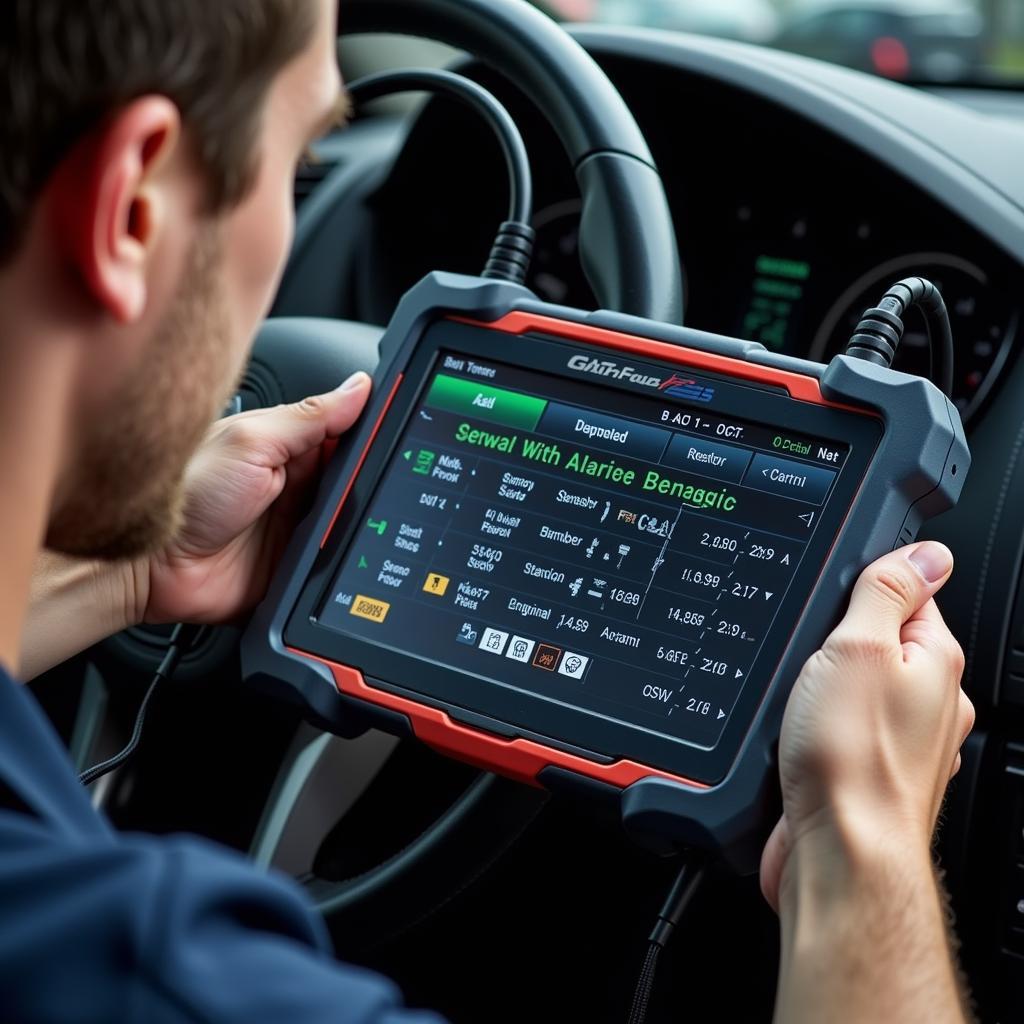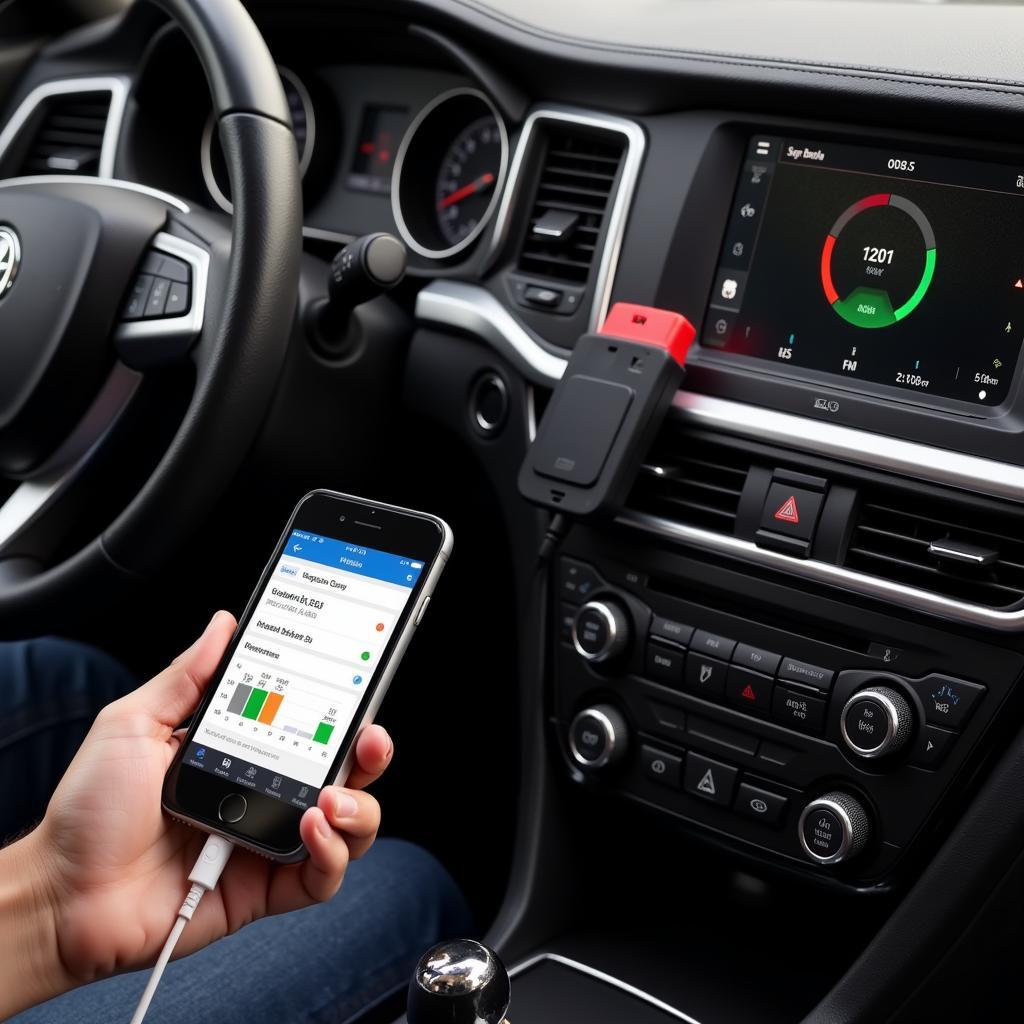Nội dung bài viết
Car Diagnostic Scan Tools have revolutionized the way we troubleshoot and repair vehicles. These essential tools provide a window into the inner workings of a car’s computer systems, allowing mechanics and car owners alike to pinpoint issues with speed and accuracy. Whether you’re a seasoned professional or a DIY enthusiast, understanding these tools is crucial in today’s automotive landscape.
Modern vehicles are complex networks of interconnected electronic systems. When something goes wrong, identifying the root cause can be like searching for a needle in a haystack without the right equipment. This is where car diagnostic scan tools come in. They act as a translator, converting the cryptic codes generated by a car’s computer into understandable information. This information allows you to identify the problem area, saving valuable time and potentially costly guesswork. Similar to walmart scan tools, these tools allow both professionals and individuals access to necessary automotive diagnostics.
Types of Car Diagnostic Scan Tools
Several types of car diagnostic scan tools are available, catering to different needs and budgets. Understanding the differences can help you choose the right tool for the job.
Basic Code Readers
These entry-level tools are designed to read and clear basic diagnostic trouble codes (DTCs). They are ideal for car owners who want to perform simple diagnostics and maintenance. However, they offer limited functionality and may not access all vehicle systems.
OBD-II Scanners
OBD-II scanners offer more advanced features than basic code readers. They can display live data from various sensors, perform emissions tests, and provide access to more detailed diagnostic information.
Professional Scan Tools
These high-end tools are typically used by professional mechanics and offer a comprehensive range of features. They can perform advanced diagnostics, program modules, and access manufacturer-specific data. Professional scan tools often come with a hefty price tag, but they provide the most comprehensive and accurate diagnostic information.
 Professional Car Diagnostic Scan Tool in Use
Professional Car Diagnostic Scan Tool in Use
What to Look for in a Car Diagnostic Scan Tool
When choosing a car diagnostic scan tool, consider factors such as your budget, skill level, and the types of vehicles you’ll be working on. Some key features to look for include:
- Vehicle Coverage: Ensure the tool is compatible with the makes and models you plan to diagnose. This is crucial for accessing all necessary systems and data.
- Functionality: Decide whether you need basic code reading, live data streaming, or more advanced features like programming and module coding.
- User Interface: Choose a tool with an intuitive and easy-to-use interface. Navigating menus and interpreting data should be straightforward.
- Updates: Software updates are essential for keeping your scan tool compatible with new vehicle models and technologies.
Common Uses of Car Diagnostic Scan Tools
Car diagnostic scan tools are versatile and can be used for a variety of tasks, including:
- Identifying Check Engine Light Causes: Quickly pinpoint the reason for a check engine light illumination. This can help save time and prevent unnecessary repairs. Just as with a u scan car diagnostic tool, these devices can decode the reasons for warning lights.
- Troubleshooting Performance Issues: Diagnose problems related to engine performance, fuel economy, and emissions.
- Monitoring Sensor Data: Track sensor readings in real time to identify intermittent issues and monitor system performance.
- Performing Emissions Tests: Ensure a vehicle meets emissions standards.
How to Use a Car Diagnostic Scan Tool
Using a car diagnostic scan tool is generally straightforward, but specific procedures may vary depending on the tool and vehicle.
- Locate the OBD-II port: This port is typically located under the dashboard on the driver’s side.
- Connect the scan tool: Plug the scan tool’s cable into the OBD-II port.
- Turn on the ignition: Turn the ignition key to the “on” position without starting the engine.
- Read the codes: Follow the scan tool’s instructions to read the diagnostic trouble codes.
- Interpret the codes: Look up the code definitions in a repair manual or online database. As with djuagnostic scan tools, accurate interpretation is key.
- Clear the codes: After addressing the issue, use the scan tool to clear the codes.
“Regular use of a diagnostic scan tool can prevent small problems from becoming major headaches,” says automotive expert, Michael Carter, ASE Certified Master Technician. “Early detection and prompt action can save you both time and money in the long run.”
Maintaining Your Car Diagnostic Scan Tool
Keeping your scan tool updated with the latest software is crucial for ensuring compatibility with new vehicles and accessing the latest features.
“Investing in a good quality scan tool and keeping it updated is like having a personal mechanic on call,” adds Sarah Miller, Lead Technician at Auto Solutions. This is especially true when dealing with specific makes, like using european car scan tools. “It empowers you to take control of your car’s maintenance and repair.”
Conclusion
Car diagnostic scan tools are indispensable for anyone involved in automotive repair or maintenance. From basic code readers to professional-grade scanners, the right tool can help you quickly and efficiently diagnose problems, saving you valuable time and money. Understanding the various types of tools available, their features, and how to use them effectively is essential for navigating the complexities of modern vehicles. Investing in the right tool, like software scanning tools, is an investment in efficient and effective car maintenance. For further assistance and personalized advice, connect with us at ScanToolUS at +1 (641) 206-8880. Our office is located at 1615 S Laramie Ave, Cicero, IL 60804, USA.

